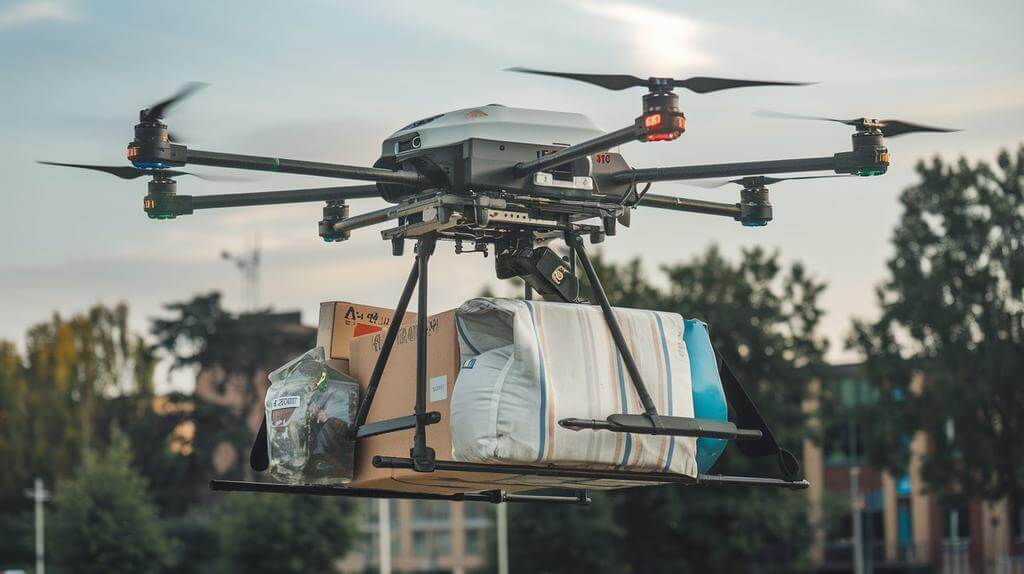The weight a drone can carry is a key concern for many users, from hobbyists to professionals.
This article provides a detailed analysis of drone payload capacities, covering various factors such as drone size, use case, and brand. In just a few minutes, you'll gain a clear understanding of how to assess and optimize your drone's carrying capacity, ensuring you make the most of its capabilities.
How Much Weight Can Drones Carry Based on Their Size?
| Drone Size | Payload Capacity | Description |
|---|---|---|
| Mini Drones | Up to 100g | Smallest category of drones, typically for recreational use. |
| Small Drones | 100g to 1kg | Used for recreational or light commercial tasks, easy to maneuver. |
| Medium Drones | 1kg to 5kg | Used in professional fields like photography, surveying, and agriculture. |
| Large Drones | 5kg to over 30kg | Designed for industrial inspections, cargo transport, heavy-duty photography. |
| Heavy Lift Drones | 30kg to 220kg or more | Specialized for heavy lifting, used in construction, agriculture, and emergency response. |
Mini Drones
Mini drones are the smallest category of drones, typically used for recreational purposes or basic training. These drones have very limited payload capacities, usually up to 100g. Due to their small size and lightweight design, they are not suitable for carrying any substantial load. Mini drones are often used by hobbyists to practice flying and for light photography or simple tasks that do not require carrying extra equipment.
Small Drones
Small drones are generally used for recreational activities or light commercial tasks, with a payload capacity ranging from 100g to 1kg. These drones are easy to maneuver and are ideal for carrying lightweight cameras or sensors. Small drones are popular among photographers and surveyors for basic aerial photography or short-range observation.
Medium Drones
Medium-sized drones are more commonly used in professional fields such as photography, surveying, and agriculture. They typically have payload capacities ranging from 1kg to 5kg, making them suitable for carrying heavier cameras, sensors, or small packages. These drones are versatile tools in various commercial applications, offering enhanced stability and flight time compared to smaller drones. Medium drones are often deployed in tasks like agricultural monitoring, where they can carry specialized equipment for spraying pesticides or capturing detailed aerial images.
Large Drones
Large drones are designed for more demanding tasks, such as industrial inspections, cargo transport, and heavy-duty aerial photography. These drones can handle payloads ranging from 5kg to over 30kg, depending on their specific design and purpose. For example, drones like the T-DRONES MX860 can carry up to 9kg, making them suitable for industrial inspections and agricultural surveys, while models like the DJI FlyCart 30 can transport up to 30kg of cargo over significant distances. Large drones are often built with advanced flight control systems and robust frames to support heavy loads, ensuring stable and reliable operation under demanding conditions.
Heavy Lift Drones
Heavy lift drones are specialized for carrying significantly larger payloads, often exceeding 30kg and going up to 220kg or more. These drones are used in sectors such as construction, agriculture, and emergency response, where the ability to lift and transport heavy equipment or supplies is crucial. For instance, the GRIFF Aviation 300 can carry up to 227kg, making it one of the most capable heavy lift drones available. These drones are equipped with powerful motors, large propellers, and durable frames, enabling them to perform complex tasks such as transporting building materials, conducting industrial inspections, or delivering essential supplies during disaster relief operations.
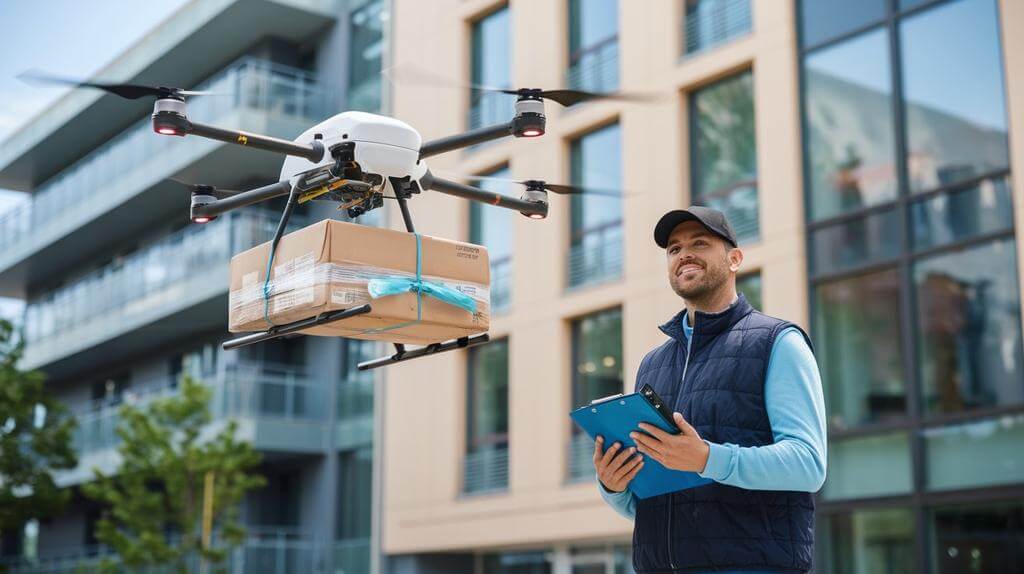
How Much Weight Can Drones Carry Based on Their Use Case?
| Use Case | Payload Capacity | Description |
|---|---|---|
| Consumer Drones | Up to 5kg | For hobbyists, semi-professional users, supports consumer-grade to some professional cameras. |
| Commercial Drones | 3kg to 10kg | For professional use in real estate, construction, agriculture, logistics. |
| Agriculture Drones | 2kg to 30kg | For crop monitoring, spraying, mapping, crucial in precision farming. |
| Delivery Drones | 5kg to 50kg | Built for transporting packages, especially in remote areas and commercial logistics. |
| Photography and Filmmaking Drones | 1kg to 10kg | Designed for professional-grade cameras, stabilizers in filmmaking. |
Consumer Drones
Aimed at a broader audience, including hobbyists and semi-professional users, consumer drones generally support payloads up to 5kg. These drones are sufficient for most consumer-grade cameras or light equipment and are commonly used in casual or semi-professional photography and videography.
Commercial Drones
Used in professional settings, commercial drones offer higher payload capacities, often between 3kg and 10kg. These drones are utilized in various industries such as real estate, construction, agriculture, and logistics, where carrying heavier equipment or packages is necessary.
Agriculture Drones
Agricultural drones are designed to carry equipment such as sensors, sprayers, and cameras for crop monitoring, spraying, and mapping. Their payload capacities typically range from 2kg to 30kg, depending on the scale of the operation and the specific tasks they are used for.
Delivery Drones
Delivery drones, built to transport packages, have payload capacities ranging from 5kg to 50kg. They are increasingly used in e-commerce and logistics for efficient delivery, especially in remote areas.
Photography and Filmmaking Drones
Drones used in professional photography and filmmaking require payload capacities of 1kg to 10kg to carry high-quality cameras and stabilizers. Some larger drones can support heavier equipment, ensuring stable flight for capturing professional-grade footage.
How Much Weight Can Drones Carry Based on Their Brand?
| Brand | Payload Capacity | Description |
|---|---|---|
| DJI | 1kg to 30kg | Leading brand with wide range, used in many industries. |
| Parrot | 500g to 700g | Known for portable, user-friendly drones for smaller-scale operations. |
| Autel Robotics | 1kg to 5kg | Focus on high-performance, versatile, suitable for professional applications. |
| T-DRONES | 1kg to 15kg | Specializes in industrial, heavy-lift drones for demanding tasks. |
| Ehang | 100kg to 220kg | Known for heavy-lift, passenger-carrying drones, pioneering in drone transportation. |
DJI
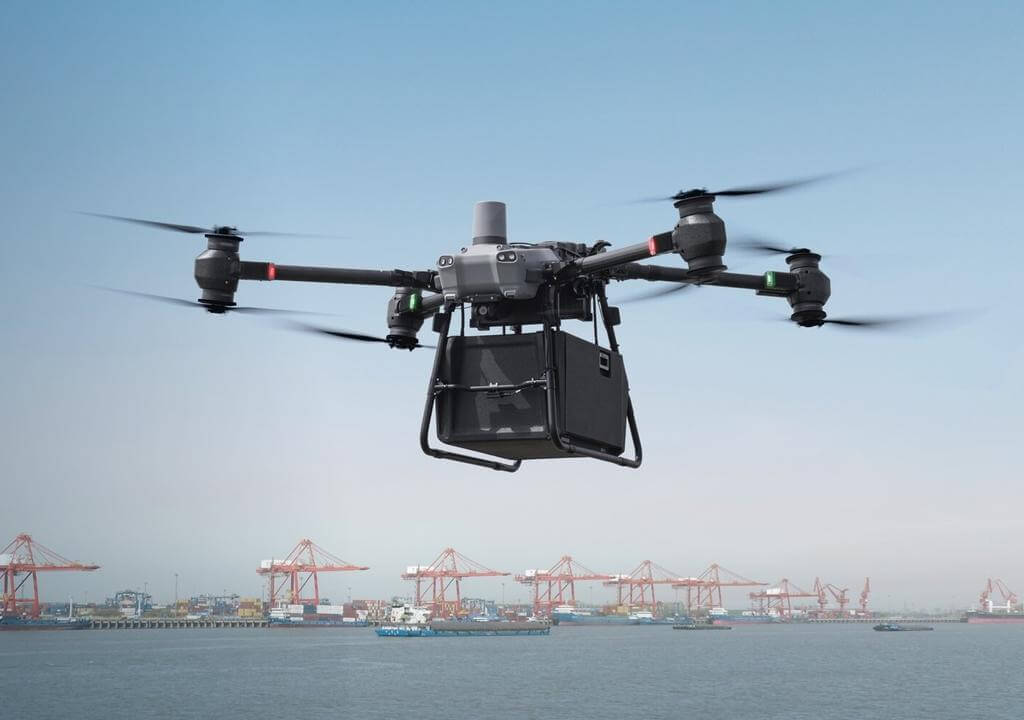
Image source: dji.com. Please contact us for removal in case of any infringement.
DJI is a leading brand in the drone industry, known for producing a wide range of drones catering to both consumer and professional markets. DJI drones generally offer payload capacities ranging from around 1kg for smaller consumer models, such as the DJI Mavic series, to up to 30kg in more specialized models like the DJI FlyCart 30. The FlyCart 30, in particular, is designed for heavy-duty tasks, including delivery services, where it can carry significant loads over long distances. DJI drones are widely used in various industries, including photography, agriculture, and logistics, due to their reliability and advanced technology.
Parrot
Parrot is another well-known drone manufacturer, particularly recognized for its consumer and commercial drones. Parrot drones, such as the Parrot Anafi series, typically have payload capacities ranging up to 500g to 700g. These drones are designed for lightweight tasks like aerial photography, surveying, and agricultural monitoring. While Parrot's drones are not as heavy-duty as those from other brands, they are highly portable and user-friendly, making them a popular choice for smaller-scale operations.
Autel Robotics
Autel Robotics produces drones that cater to both consumers and professionals, with a focus on high-performance and versatility. The payload capacities of Autel drones, such as the Autel EVO series, typically range from 1kg to 5kg. These drones are equipped with advanced imaging systems, making them ideal for tasks that require high-quality aerial photography and videography. Autel drones are known for their durability and advanced flight control systems, making them suitable for a variety of professional applications.
T-DRONES
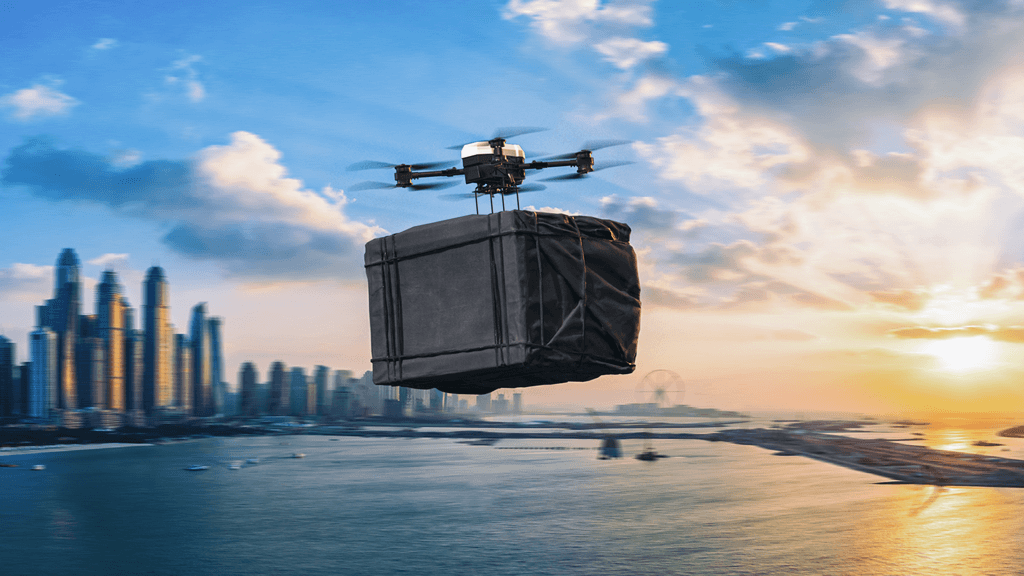
T-DRONES is a brand specializing in industrial and heavy-lift drones. Their drones, such as the T-DRONES M1200 and MX860, are designed for carrying substantial payloads, with capacities ranging from 1kg to 15kg. These drones are used in industries such as construction, agriculture, and logistics for tasks that require lifting and transporting heavy equipment or supplies. T-DRONES models are built with robust frames and powerful motors, ensuring stability and reliability even under heavy loads.
Ehang
Ehang is a leading manufacturer of autonomous aerial vehicles (AAVs), particularly known for their heavy-lift and passenger-carrying drones. The Ehang 184 and EH216-S models are capable of carrying payloads ranging from 100kg to 220kg, making them some of the most powerful drones available. Ehang's drones are used in a variety of applications, including urban air mobility, emergency response, and large-scale logistics. Their focus on autonomous flight technology and heavy payload capabilities makes them a pioneer in the future of drone transportation.
If you're looking for specific heavy-lift drone products, you can refer to my previous article, Top 10 Heavy Lift Drones of 2025 (5-220kg Capacity). It provides a comprehensive list of drones with various payload capacities, along with detailed specifications and reviews to help you find the right drone for your needs.
How to Calculate Payload Capacity for Your Drone
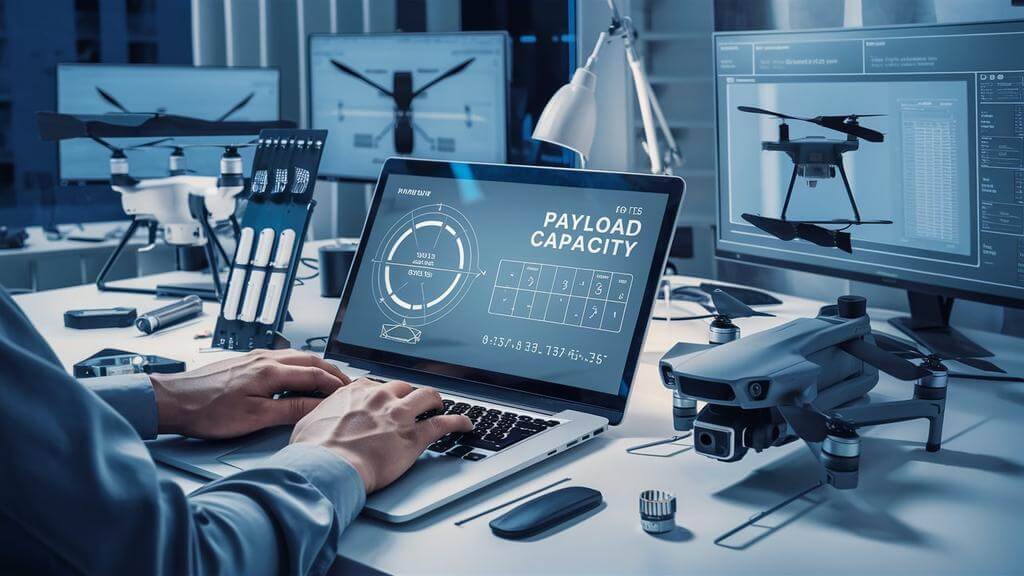
Calculating the payload capacity of a drone is essential for ensuring optimal performance, whether it's for commercial, recreational, or rescue missions. This guide provides a streamlined approach to calculating and optimizing your drone's payload capacity, focusing on thrust, weight, and power management.
1. Understanding the Thrust-to-Weight Ratio
The thrust-to-weight ratio determines how much payload your drone can carry. Calculate the required thrust using the formula:
Thrust = Mass × Gravity × Safety Factor
Where:
Mass: Total weight of the drone plus the payload.
Gravity: A constant value of 9.81 m/s².
Safety Factor: Typically set at 2, ensuring sufficient thrust for stability and maneuvers.
Example: For a drone weighing 35 kg with a 5 kg payload, the total mass is 40 kg. The drone needs 40 kgf of thrust to hover and approximately 80 kgf for stable control during flight. A higher thrust-to-weight ratio enhances maneuverability and overall flight performance.
2. Calculating Thrust for the Propulsion System
To ensure your drone's propulsion system can generate the required thrust, you can consider the following approaches:
Using Manufacturer's Data: Reference motor, ESC, and propeller specs provided by manufacturers to evaluate if your system meets the thrust requirements.
Thrust Stand Testing: Perform physical tests to verify the system’s performance under load.
Example: A propulsion system with a 40-inch propeller might generate the needed 20 kgf per propeller, depending on the specific setup. Consider environmental factors like temperature and humidity, which can impact performance.
3. Evaluating Payload Impact on Flight Time
Increasing payload affects both weight and flight time. More payload requires more thrust, reducing battery life. Follow these steps to assess the impact:
Use a Flight Time Calculator: Input drone weight, battery capacity, and propulsion specs into a tool like the Tyto Robotics spreadsheet to predict flight time changes with different payloads.
Simulate Different Payloads: Gradually increase payload weights in the calculator to observe the corresponding changes in flight time. This step helps you understand the thresholds at which the additional weight begins to significantly affect performance, allowing you to plan and adjust accordingly.
Optimize Battery Usage: Analyze the power draw at various payload levels to maximize efficiency and optimize the balance between payload capacity and flight duration. By finding the optimal battery configuration, you can extend flight time while carrying the desired payload. Additionally, consider other factors such as wind speed and flight mode, as these can also impact flight time.
Example: Increasing the payload from 0 to 1 kg might significantly decrease flight time, depending on the drone’s power efficiency and battery capacity.
By following these steps, you can accurately calculate and optimize your drone's payload capacity, ensuring it meets your specific needs while maintaining sufficient flight time. Always consider safety factors and adhere to relevant regulations.
What Are the Factors That Influence Drone Payload?
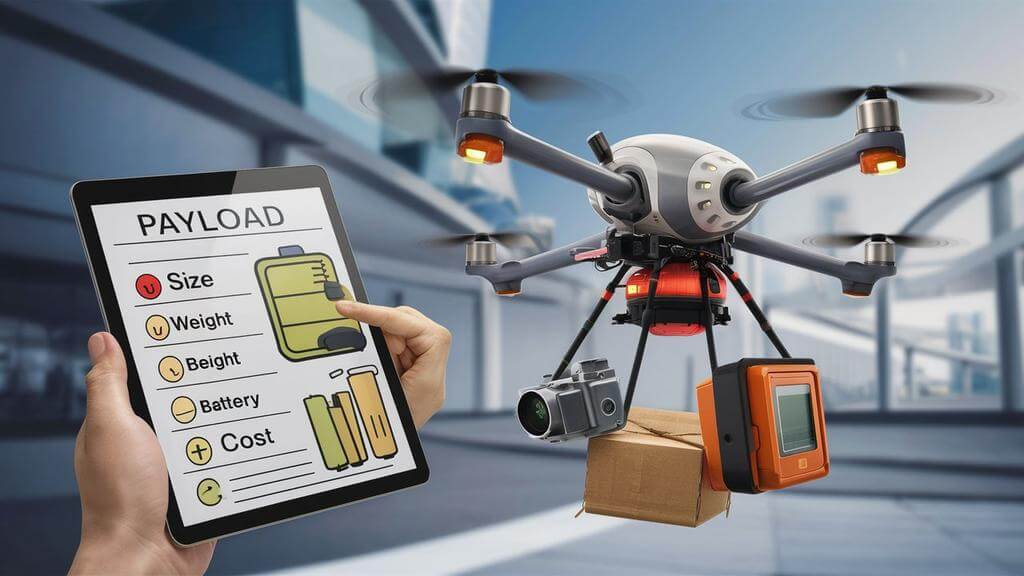
1. Drone Weight
The drone's own weight, including its frame and components, directly affects its payload capacity. Heavier drones have less capacity for additional payloads, so it’s crucial to balance the drone’s weight with the expected payload.
2. Battery Weight and Capacity
Battery Weight: Heavier batteries reduce the available payload capacity.
Battery Capacity: High-capacity batteries can extend flight time but may add significant weight, reducing the effective payload. The discharge rate (C-rate) is also important, as it affects performance under heavy loads.
3. Propeller Size and Number
Propeller Size: Larger propellers generate more lift, allowing the drone to carry heavier loads.
Number of Propellers: More propellers (e.g., hexacopters, octocopters) distribute weight better, improving lift and stability. Propeller design, including blade shape and material, also impacts efficiency and performance.
4. Motor Power
Stronger motors can handle heavier payloads but consume more power, potentially reducing flight time. High-efficiency motors provide the needed thrust with less power, extending flight duration.
5. Aerodynamics and Center of Gravity
Aerodynamics: The drone's design impacts how well it can carry and maneuver with a payload.
Center of Gravity: Properly balancing the payload is crucial for maintaining stability and control. Uneven weight distribution can degrade flight performance.
6. Environmental Factors
Wind, temperature, humidity, and air pressure can affect a drone’s lift and power consumption. High temperatures or humidity, for instance, can reduce battery performance and thrust.
How to Increase Drone Payload Capacity?
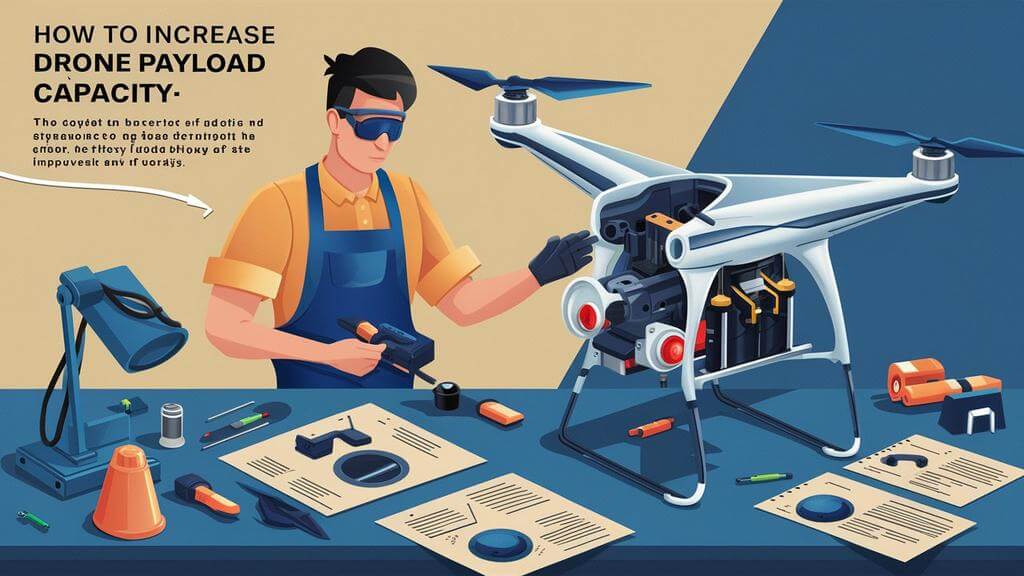
Increasing a drone's payload capacity requires careful optimization of its components. Here’s how to achieve better performance:
1. Optimize the Propulsion System
Choose the Right Propellers: Selecting propellers that offer the highest efficiency at the desired thrust levels is crucial. Propeller efficiency directly impacts the amount of lift generated per unit of power. Testing different propeller sizes, pitches, and materials using a thrust stand can help identify the most efficient configuration. Additionally, consider the propeller's design, including blade shape and compatibility with the drone's overall design.
Choose High-Efficiency Motors: Pair propellers with motors that provide the necessary thrust without excessive power use. Controlled testing helps determine the best motor specifications.
2. Enhance Power Management
Increase Battery Capacity: Using larger batteries with higher energy density can extend flight time and provide more power for carrying additional payloads. However, there’s a trade-off, as heavier batteries increase the drone’s overall weight, potentially reducing efficiency.
Optimize ESCs: Ensure Electronic Speed Controllers (ESCs) are matched to motor requirements, capable of handling peak currents during heavy loads.
3. Improve Aerodynamics
Streamline the Drone’s Design: Reducing drag is vital for maintaining or increasing flight performance when adding extra weight. Streamlining the drone's body and minimizing protruding components can significantly reduce air resistance, allowing for more efficient flight.
Adjust the Center of Gravity: Properly balancing the drone’s weight distribution is critical, especially when carrying heavy payloads. An even distribution of weight ensures stable flight and prevents unnecessary strain on the motors. Consider using adjustable mounting systems to help fine-tune the center of gravity based on the payload.
4. Test and Refine
Use Data-Driven Approaches: Continuous testing is key to finding the optimal setup. Utilize thrust stands and flight time calculators to gather data on different configurations. This data can inform adjustments to the propulsion system, battery selection, and overall design.
5. Consider Advanced Technologies
Hybrid Propulsion Systems: Combining different types of power sources, such as electric and fuel-powered systems, can increase both range and payload capacity. Hybrid systems allow drones to carry heavier loads while maintaining longer flight times, making them suitable for more demanding applications.
Intelligent Systems: Incorporating advanced sensors and autonomous control systems can optimize flight paths and power usage, enabling the drone to manage payloads more effectively. These systems can help dynamically adjust flight parameters based on real-time data, improving overall efficiency.
What Are the Consequences of Overloading a Drone?
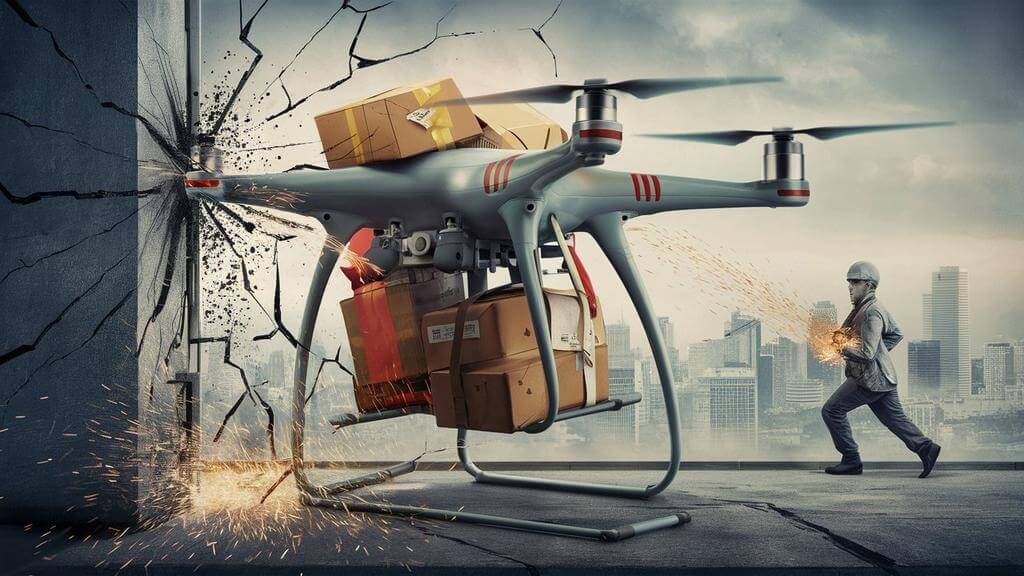
Overloading a drone can severely impact its performance and safety. Here are the key consequences:
Difficult or Failed Takeoff: Exceeding the drone’s capacity can prevent it from generating enough thrust, leading to difficulty or failure in taking off.
Loss of Flight Control: An overloaded drone may become unstable and hard to control, increasing the risk of erratic behavior and unsafe flight.
Premature Descent: Overloading forces the motors to work harder, potentially leading to premature failure, rapid descent, or even a crash.
Complete Loss of Control: In severe cases, excessive load can cause the motors to overheat or fail, resulting in the drone becoming unresponsive.
Overheating: The added strain can cause the motors to overheat, damaging internal components and potentially rendering the drone inoperable.
What is the Weight Limit for a Large Drone?
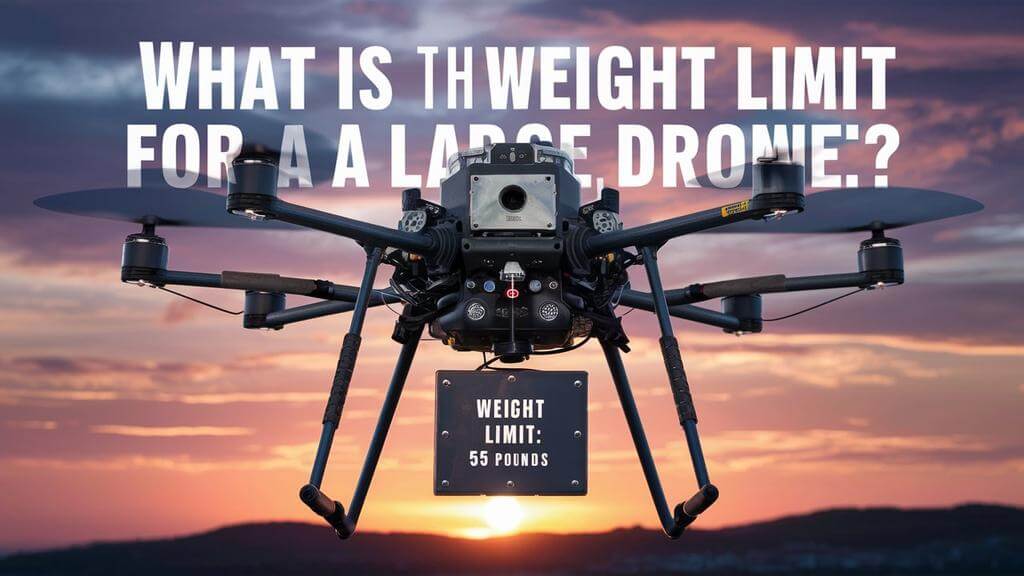
Drone weight limits vary by country, but the regulations set by the Federal Aviation Administration (FAA) in the United States are as follows:
Maximum Weight for Standard Drones: According to FAA regulations, all drones must weigh no more than 55 pounds (approximately 25 kilograms) at takeoff, including any payload such as cameras or other equipment. This rule applies to both recreational and commercial drone pilots.
Drones Over 55 Pounds: If a drone exceeds the 55-pound limit, it falls under a different set of regulations that require a special waiver from the FAA. These regulations are more stringent and may involve additional safety requirements, flight restrictions, and operational limitations to ensure safe integration into the national airspace.
Sub-250-Gram Drones: Drones that weigh less than 250 grams (0.55 pounds) are subject to fewer regulations, particularly in terms of registration requirements. However, they are still subject to general operational rules, especially when flown under the FAA's Part 107 for commercial purposes.
The weight limits are crucial for maintaining safety in the national airspace. Heavier drones have the potential to cause more damage in case of an accident, and their operation requires more stringent safety measures. The 55-pound limit ensures that drones can be safely operated by pilots who are familiar with the necessary regulations and have obtained the proper certifications.
Drones over 55 pounds often require specialized knowledge and equipment to operate safely. These drones are typically used in more industrial applications, such as large-scale surveying, agriculture, or heavy payload delivery.
